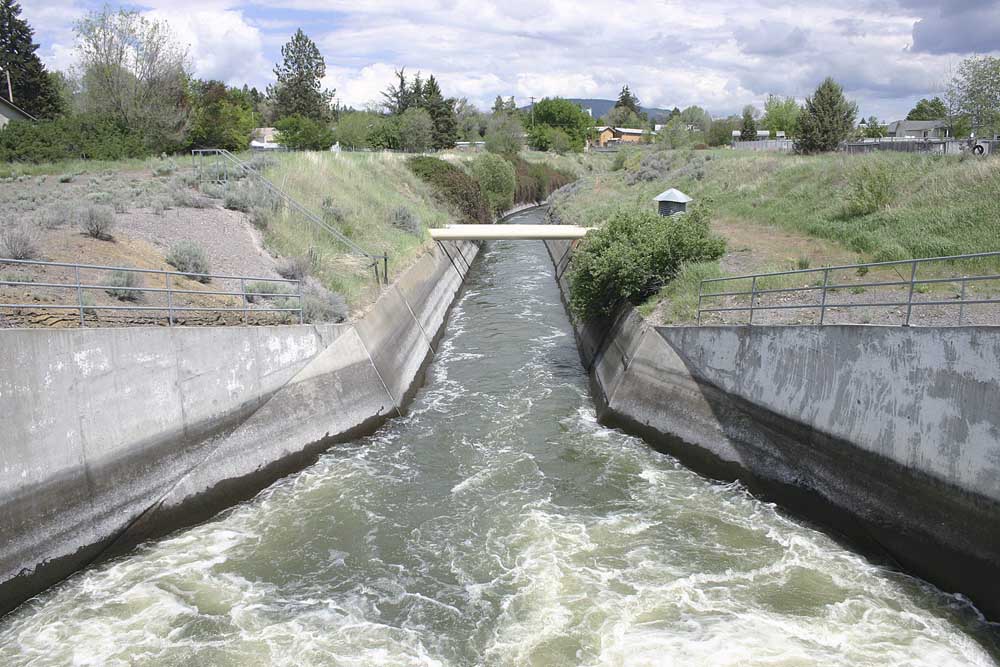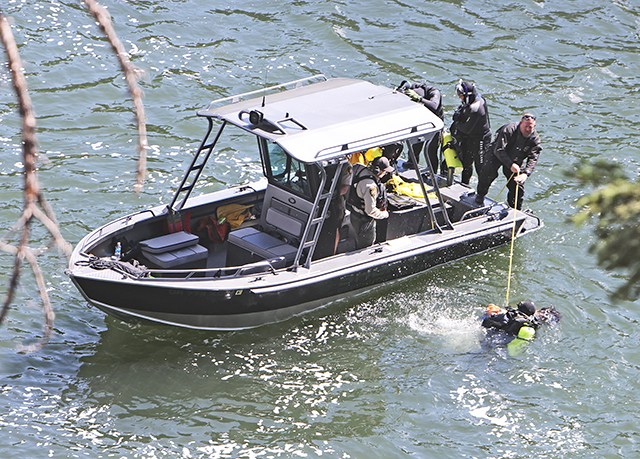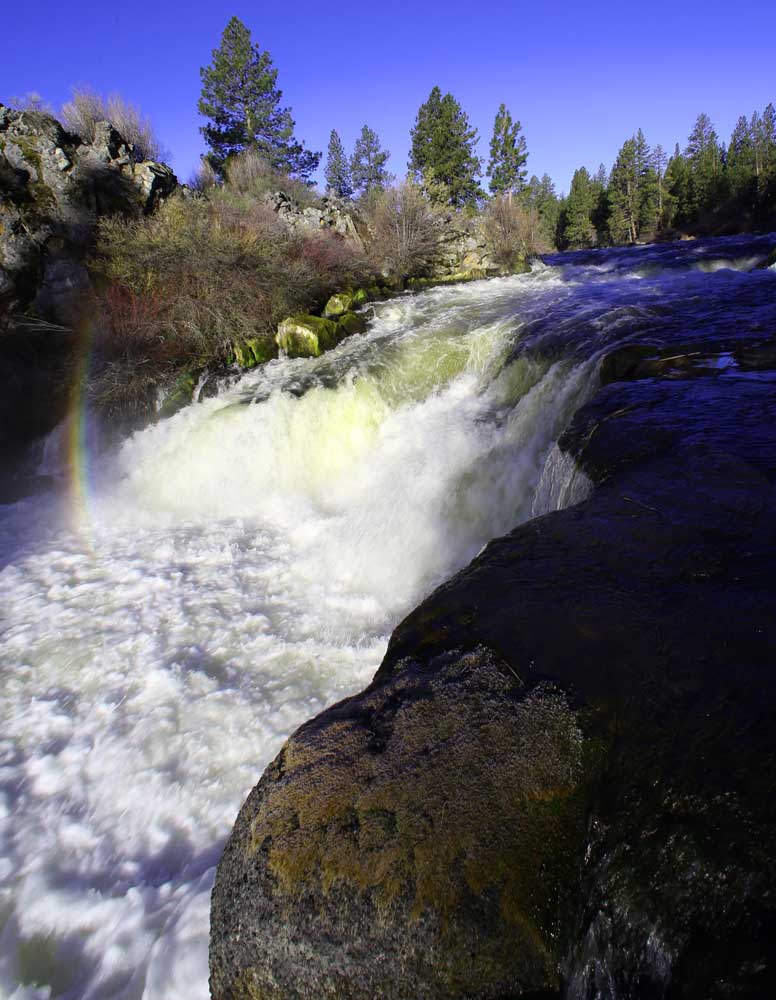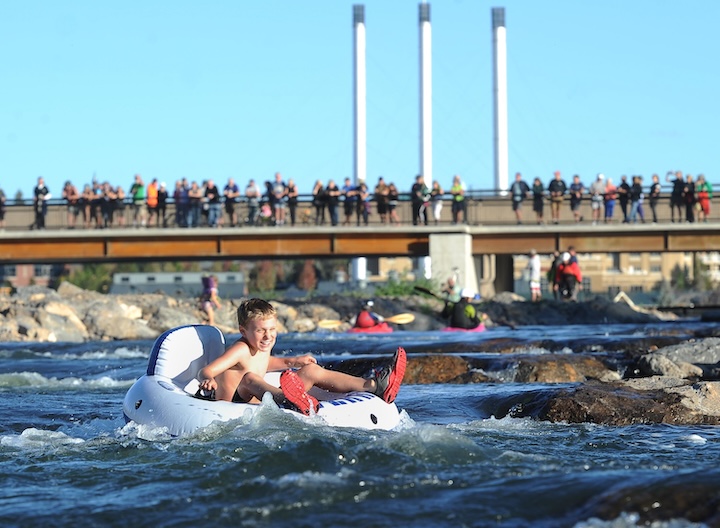Another year of record low inflows for Upper Klamath Lake
Published 2:00 pm Tuesday, April 5, 2022

- Water flows from Upper Klamath Lake into the A Canal, part of the Klamath Project in 2018.
KLAMATH FALLS — One year after the U.S. Bureau of Reclamation shut off water to the Klamath Project amid a devastating regionwide drought, conditions appear to be worse heading into the 2022 irrigation season.
Upper Klamath Lake is again getting record low inflows following another dry winter. As of Tuesday, the Klamath Basin had received just 67% of its median precipitation for the water year dating back to Oct. 1 and 26% of median snowpack.
Trending
Brian Person, a senior adviser for the Bureau of Reclamation in Klamath Falls, said the agency will announce its annual water allocation for the Klamath Project on April 12. He declined to speculate whether there would be a second consecutive shutoff, but said it has been “a very difficult year.”
“We had a promising start to the water year,” Person said, adding the basin had above-average snowpack in November and December. “It just stopped. It almost flatlined through this calendar year.”
During that time, Upper Klamath Lake inflows totaled 425,000 acre-feet of water. That is a record low, Person said, even lower than the previous record of 427,000 acre-feet set last year.
Person said each of the last three years — 2020, 2021 and 2022 — rank in the top five driest years on record for Upper Klamath Lake.
“That’s not a record we were hoping to set,” he said.
The Bureau of Reclamation manages water in Upper Klamath Lake for irrigators and two species of endangered sucker fish, known by the Klamath Tribes as C’waam and Koptu. Under the agency’s interim operations plan, the lake’s water surface elevation must remain above 4,142 feet in April and May to provide shoreline spawning habitat for the sucker fish.
Trending
However, Person said the lake has already failed to meet that requirement.
The operations plan also calls for a springtime “flushing flow” of water from Upper Klamath Lake down the Klamath River to protect coho salmon from C. shasta, a fish-killing parasite that thrives in warm, slow-moving water.
Person said the bureau is working to formulate a flushing flow for this year, though there is not enough water in the lake to release the full 50,000 acre-foot volume.
Meanwhile, the fate of farmers and ranchers hangs in the balance as they await how much, if any, water will be allocated to the Klamath Project.
The project serves approximately 175,000 acres of irrigated farmland straddling Southern Oregon and Northern California, as well as delivering water to two national wildlife refuges that are important stops for migratory birds along the Pacific Flyway.
Last year’s shutoff resulted in alarming scenes across the basin as fields turned into blowing dust, canals were choked with weeds and hundreds of domestic wells failed, leaving residents without the ability to shower or flush their toilets.
Paul Simmons, executive director of the Klamath Water Users Association, said concern is once again running high in the agricultural community.
”We can’t have a ‘last year’ again,” Simmons said. “We have to have a meaningful supply of irrigation water.”
The association has pointed to what it perceives as flaws in the Bureau of Reclamation’s interim operations plan for Upper Klamath Lake. Simmons described it as a “Frankenstein’s monster” that simply does not work in dry years.
”There is physically enough water to irrigate 100% of the project this year,” Simmons said. “Most of it is going to go to other purposes.”
Person said the Bureau of Reclamation will continue to use the interim operations plan through 2022 before re-initiating consultation with the National Marine Fisheries Service and U.S. Fish & Wildlife Service on a new plan beginning in 2023, when the removal of four hydroelectric dams along the lower Klamath River is scheduled to begin.
”That is, of course, going to change the river landscape,” he said.
In setting this year’s Klamath Project allocation, Person said the bureau is in discussions with agricultural groups, counties, tribal governments and other regulatory agencies to balance the competing interests.
”We are constrained by the numbers. We are constrained by the requirements of the ESA. But within that framework, we’re working to make the best informed decision we can,” he said. “When you have a shortage of water, it makes the allocation process an incredible challenge.”








